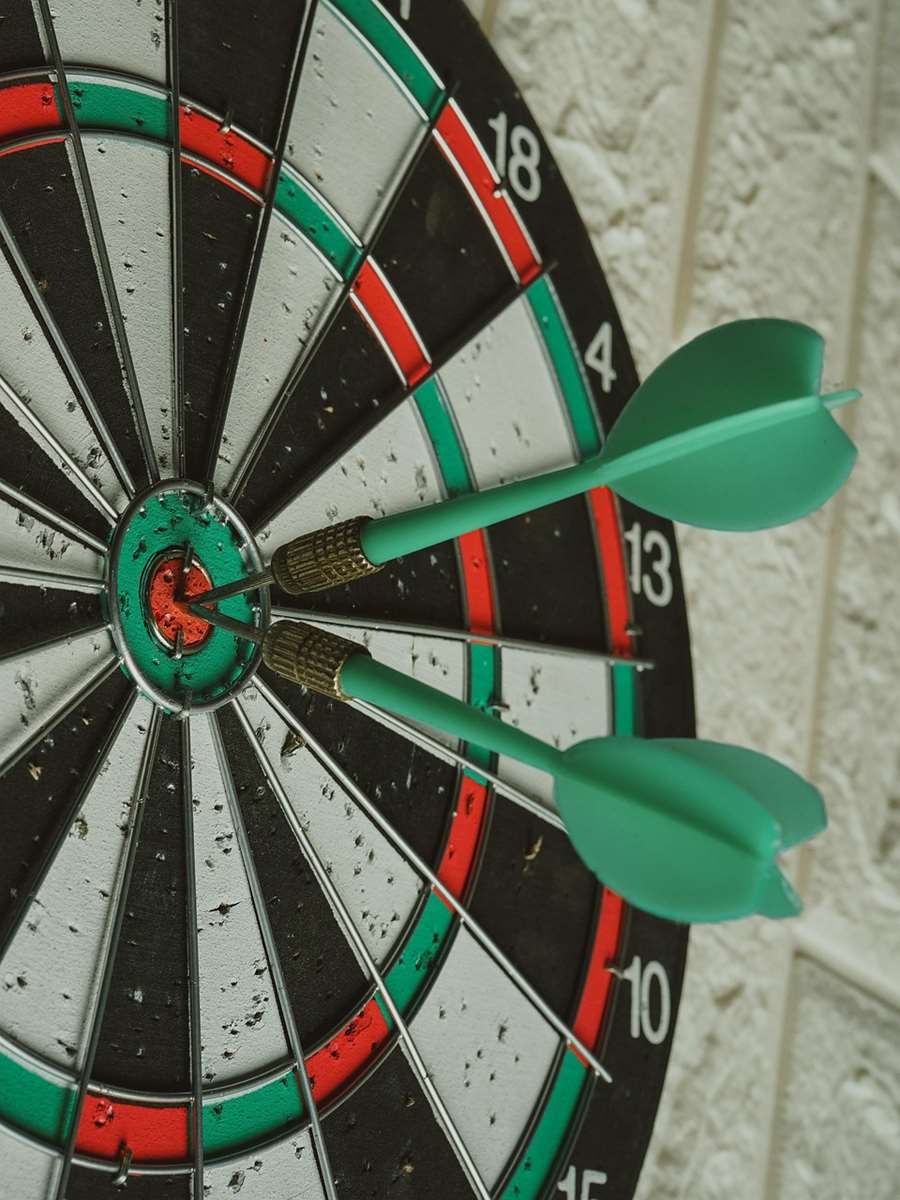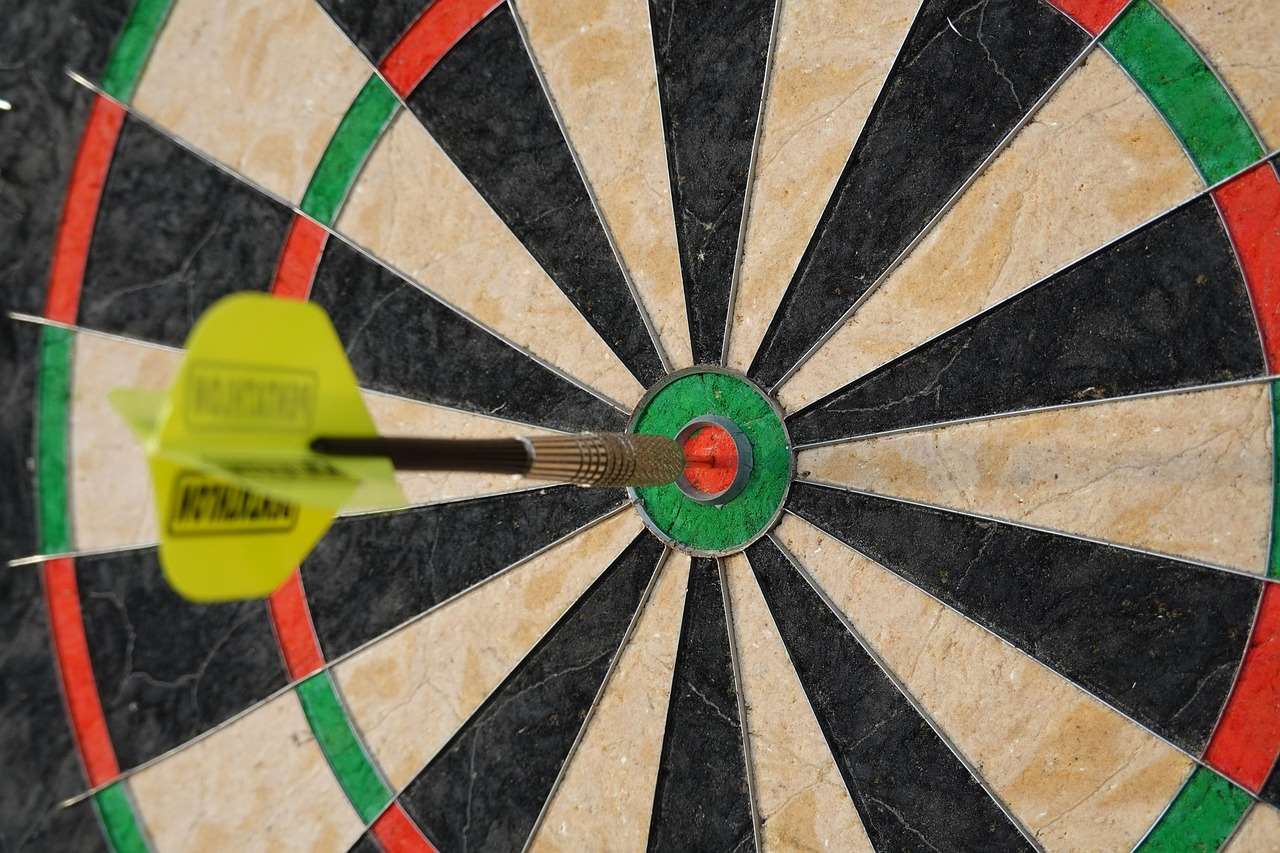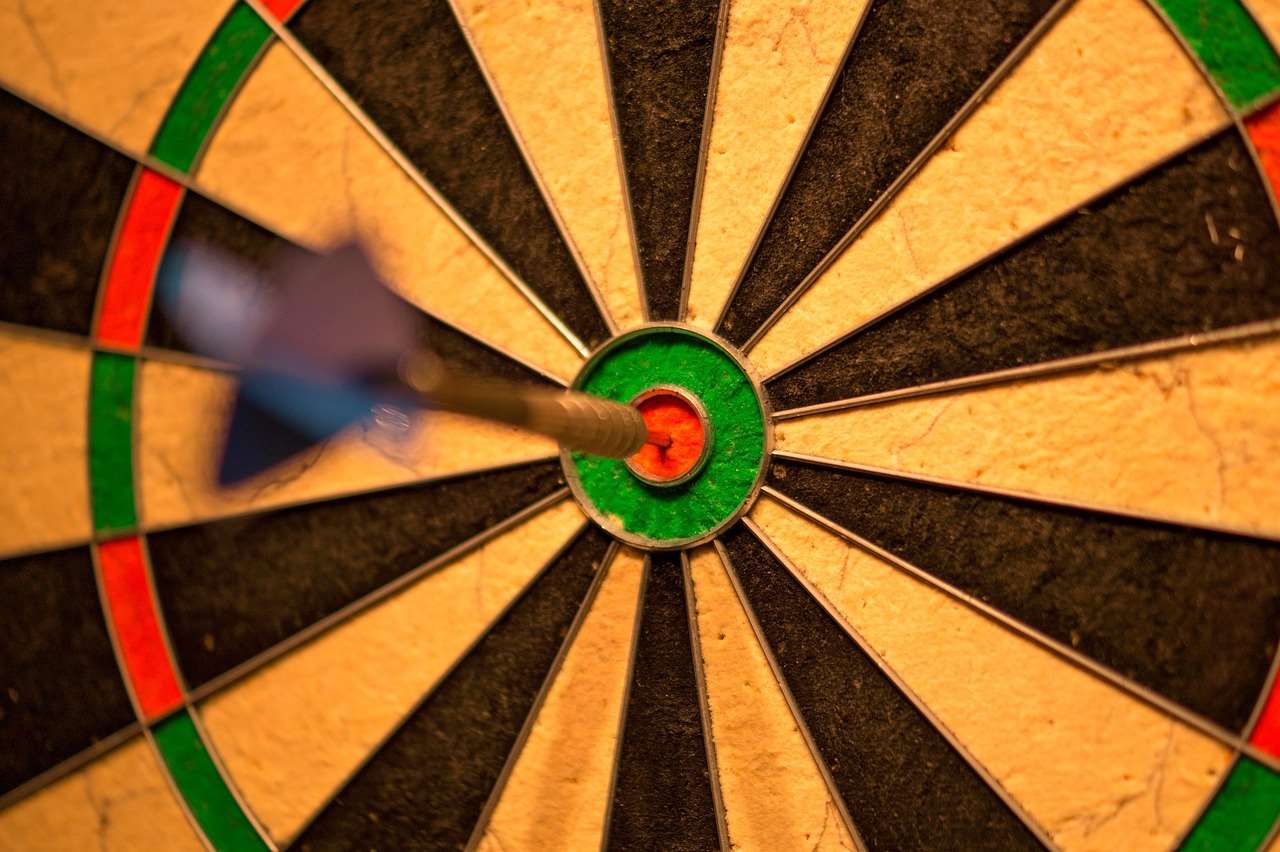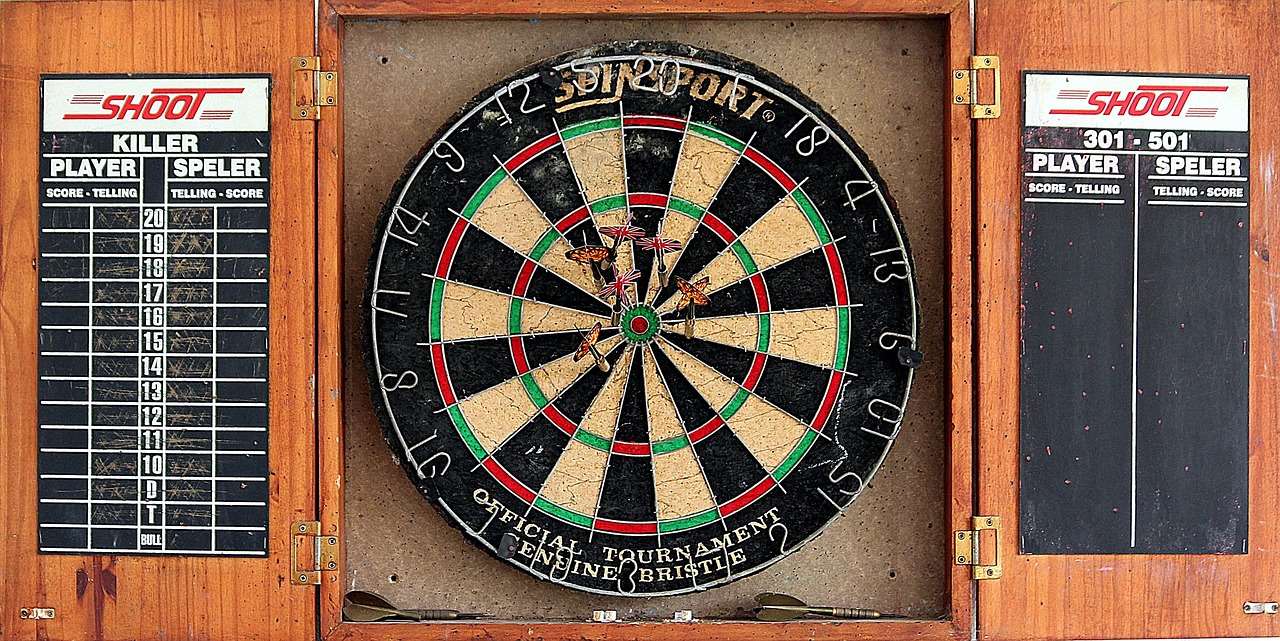If my darts are going high consistently, it often boils down to your release point or stance. This article will guide you through diagnosing the common causes and implementing simple adjustments to improve your accuracy on the dartboard, along with tips on equipment and practice routines to sharpen your skills.
⚠️ Still Using Pen & Paper (or a Chalkboard)?! ⚠️
Step into the future! The Dart Counter App handles all the scoring, suggests checkouts, and tracks your stats automatically. It's easier than you think!
Try the Smart Dart Counter App FREE!Ready for an upgrade? Click above!
Why My Darts Are Going High: Common Causes and Solutions
It’s a frustrating experience: you aim for the treble 20, and instead, my darts are going high, thudding into the wall above the dartboard. Don’t despair! This is a common issue with several potential causes. Let’s break down the most frequent culprits and how to fix them.

1. The Release Point: Too Early or Too Late?
One of the most common reasons for high darts is an inconsistent release point. If you release the dart too early, you’ll impart an upward trajectory, sending your dart sailing high. Conversely, if you release too late, you may pull the dart downward or to the side. Pay close attention to when the dart leaves your fingers. Film yourself throwing if necessary to diagnose the timing. A consistent release is paramount.
- Solution: Practice your release in slow motion. Focus on feeling the dart leave your fingertips at the apex of your throwing motion. Try visualizing the desired trajectory as you release.
2. Stance and Posture: Are You Leaning Too Far Back?
Your stance and posture play a crucial role in your throwing accuracy. If you’re leaning too far back, you might be unintentionally tilting your throwing arm upward, causing your darts to go high. A stable and balanced stance provides a solid foundation for your throw. Make sure you are not shifting your weight during the throw.
- Solution: Ensure your weight is evenly distributed. A slightly forward lean can help prevent your darts from going high. Experiment with different foot positions to find what feels most natural and balanced for you.
3. Grip: Too Much Pressure Can Cause Problems
The way you grip the dart can significantly impact its flight. Gripping the dart too tightly can introduce unwanted tension and affect your release. A tense grip often leads to snatching the dart, causing it to rise. A relaxed but firm grip is the key. Consider different dart grips to find what works best for you.
- Solution: Experiment with different grip pressures. Try a lighter grip and focus on a smooth, fluid throwing motion. Your grip should feel natural and comfortable, not forced.
4. Follow-Through: Completing the Motion is Essential
A proper follow-through is crucial for accuracy. An incomplete follow-through can disrupt the dart’s trajectory, leading to inconsistent results, including darts flying high. Ensure you extend your arm fully towards the target after releasing the dart. Imagine reaching for the dartboard.
- Solution: Practice exaggerating your follow-through. Focus on keeping your wrist firm and pointing your fingers towards the target after the release. A full extension helps maintain the desired trajectory.
5. Trajectory and Aiming: Understanding the Arc
Darts don’t fly in a straight line; they follow an arc. You need to account for this arc when aiming. If you’re aiming directly at the target, especially for targets higher on the board, your darts may naturally go higher than intended. This is a fundamental aspect of dart throwing technique.
- Solution: Adjust your aiming point slightly lower to compensate for the arc. Experiment with different aiming points until you find the sweet spot for each target.
Equipment Considerations: Do Your Darts Fit You?
The type of darts you use can also contribute to your accuracy. The weight, shape, and grip of your darts should suit your throwing style. If your darts are going high, your equipment may be part of the problem. A well-suited dart can make a world of difference.

1. Dart Weight: Finding the Right Balance
Dart weight is a personal preference, but it can significantly impact your throw. Heavier darts tend to fly straighter and are less affected by minor inconsistencies in your release. Lighter darts require more control and can be more susceptible to wobble. Experiment to see what fits your throwing style.
- Recommendation: Start with a mid-weight dart (around 22-24 grams) and adjust up or down based on your experience.
2. Dart Shafts and Flights: Aerodynamic Adjustments
The length and shape of your shafts and flights influence the dart’s aerodynamic properties. Shorter shafts and smaller flights provide more stability and control, while longer shafts and larger flights increase lift and drag. These can have a surprising impact if my darts are going high consistently.
- Experimentation: Try different combinations of shafts and flights to see how they affect your dart’s trajectory. Shorter shafts and smaller flights are often a good starting point for beginners.
3. Dart Grip: Texture Matters
The grip on your darts is critical for control and consistency. Different grips offer varying levels of texture and feel. A grip that’s too smooth can be slippery, while one that’s too aggressive can cause discomfort. Your grip influences your release, so choose wisely.
- Variety: Experiment with different grip styles to find one that provides a secure and comfortable hold.
Practice Drills to Correct High Darts
Consistent practice is essential for improving your dart game. Incorporating specific drills into your routine can help you address the issue of my darts are going high and develop a more consistent and accurate throw. Focus on fundamentals like stance, grip, and follow-through.

1. The “Straight Line” Drill
This drill focuses on maintaining a straight throwing motion. Set up a target line (a piece of tape or string) extending from your throwing hand to the dartboard. Focus on keeping your arm and dart aligned with this line throughout the throw. This encourages a proper follow through.
- Technique: Practice throwing darts along the line, focusing on a smooth, controlled motion.
2. The “Mirror” Drill
Practice in front of a mirror to monitor your stance, posture, and throwing motion. Pay attention to any inconsistencies or flaws in your technique. This allows for real-time visual feedback and helps you identify areas for improvement.
- Observation: Observe your release point and follow-through in the mirror. Are you leaning too far back? Is your arm extending fully towards the target?
3. The “Slow Motion” Drill
Slow down your entire throwing motion to focus on each component, from your stance to your release. This allows you to identify and correct any subtle errors that may be contributing to your darts going high. This is particularly effective for addressing release point issues.
- Focus: Concentrate on feeling the dart leave your fingertips at the correct moment. Pay attention to your grip and follow-through.
Advanced Techniques and Fine-Tuning
Once you’ve addressed the fundamental causes of my darts are going high, you can start exploring advanced techniques to further refine your game. These techniques involve subtle adjustments to your stance, grip, and release.
1. Understanding Parallax
Parallax is the apparent shift in the position of an object when viewed from different angles. In darts, parallax can affect your perceived aiming point, especially at longer distances. This is a subtle but important consideration for experienced players, and understanding parallax can improve your dart throwing accuracy.
- Compensation: Adjust your aiming point slightly based on your eye dominance and throwing stance.
2. Mental Game: Focus and Visualization
The mental aspect of darts is just as important as the physical. Developing a strong mental game can help you maintain focus, manage pressure, and improve your consistency. Visualization techniques can be particularly effective.
- Visualization: Before each throw, visualize the dart hitting the target. Imagine the trajectory and the feel of a perfect release.
Troubleshooting Specific Scenarios: My Darts Still Go High!
Even after addressing the common causes and practicing diligently, you might still find that my darts are going high occasionally. Here are some troubleshooting tips for specific scenarios.

1. Darts Go High Only on Certain Numbers
If your darts only go high when aiming at specific numbers, the issue might be related to your stance or body alignment relative to that particular section of the board. Slight adjustments to your foot position or upper body can compensate for this. Experiment until you find the right alignment. You could even use a darts scoreboard nearby to track your progress and identify patterns.
2. Darts Go High Under Pressure
Pressure can exacerbate existing flaws in your technique. When you’re feeling the heat, you might tense up, grip the dart too tightly, or rush your throw. Practice under simulated pressure to develop coping mechanisms. Try using a Cricket darts scorer app to simulate game conditions and track your scores.
3. Changes in Equipment Affecting Trajectory
Even minor changes in your equipment can alter your dart’s trajectory. If you recently switched to new shafts or flights, for example, you may need to adjust your throwing technique to compensate. A simple change can make a big difference in whether my darts are going high or hitting the target.
Maintenance and Care: Keeping Your Darts in Top Condition
Regular maintenance and care are essential for maintaining the performance of your darts. Clean your darts regularly to remove dirt and grime, and inspect them for any damage. Proper maintenance will ensure that your darts fly consistently and accurately, improving your overall game. For bedroom darts setups, proper storage is even more crucial.
- Cleaning: Wipe your darts down with a soft cloth after each use. Use a mild soap and water solution for more thorough cleaning.
- Inspection: Check your shafts and flights for any cracks or damage. Replace them as needed.

Electronic Dartboards and Leveling the Playing Field
Consider using an electronic dartboard. They offer automated scoring, which allows you to focus more on your technique. This can be helpful for practicing and identifying if my darts are going high, as you can immediately see the result and make adjustments. Some even offer practice modes and games to keep your training engaging. Thinking of getting into darts game pc?
The Importance of a Good Dartboard Setup
A proper dartboard setup can also impact your performance. Make sure your dartboard is securely mounted at the correct height (5 feet 8 inches to the bullseye) and distance (7 feet 9 1/4 inches from the oche). An uneven or poorly mounted dartboard can throw off your aim and contribute to inconsistent results, including causing you to think, “my darts are going high, even when I’m throwing correctly!” See how to put up a dartboard for step-by-step instructions.
Conclusion: Mastering Your Throw and Conquering High Darts
The issue of my darts are going high is a common challenge in darts, but it’s one that can be overcome with the right knowledge, practice, and equipment adjustments. By understanding the underlying causes, implementing the solutions outlined in this article, and dedicating yourself to consistent practice, you can improve your accuracy and start hitting your targets with confidence. Remember to focus on your stance, grip, release point, and follow-through, and don’t be afraid to experiment with different equipment options. Ready to take your dart game to the next level? Evaluate your current setup, identify your weaknesses, and commit to a focused practice routine. Now grab your darts and start practicing – bullseye awaits!
Hi, I’m Dieter, and I created Dartcounter (Dartcounterapp.com). My motivation wasn’t being a darts expert – quite the opposite! When I first started playing, I loved the game but found keeping accurate scores and tracking stats difficult and distracting.
I figured I couldn’t be the only one struggling with this. So, I decided to build a solution: an easy-to-use application that everyone, no matter their experience level, could use to manage scoring effortlessly.
My goal for Dartcounter was simple: let the app handle the numbers – the scoring, the averages, the stats, even checkout suggestions – so players could focus purely on their throw and enjoying the game. It began as a way to solve my own beginner’s problem, and I’m thrilled it has grown into a helpful tool for the wider darts community.